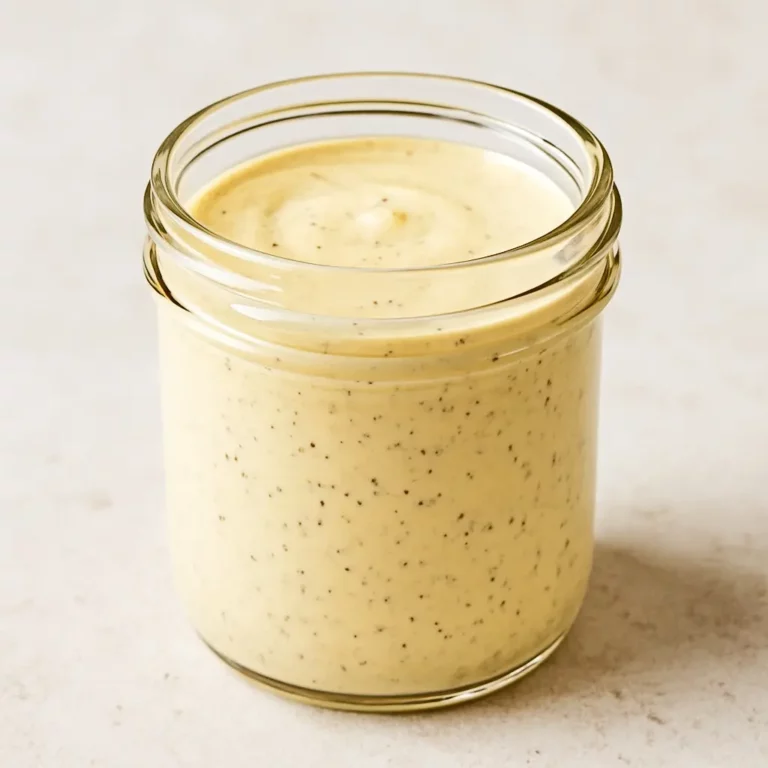Rustic Country Pâté (Pâté de Campagne), perfected for home kitchens in Canada & the USA
I filmed this French pâté de campagne a while back and it quickly became a picnic and holiday favorite. Since publishing the video, I’ve made a few refinements to guarantee a juicy, sliceable terrine at home—whether you’re cooking in Toronto, Montreal, New York, or anywhere in the U.S. and Canada. The updates are simple but powerful: dialed-in meat ratios, per-kilogram seasoning, a finer grind for the liver, and a short list of classic aromatics that never fail.

This is a rustic pork terrine—not a mousse. Expect a rosy, well-bound slice with gentle thyme, a whisper of Cognac, and pepper you can see. Serve it with cornichons, a slab of country bread, and a swipe of Homemade Mayonnaise (easy, failproof) or mustard for the most satisfying French-style appetizer in North America.
What changed since the video
- Ratios: we lock in ~25% pork liver and ~25% pork fat for moisture and flavor.
- Seasoning: salt by weight (16–18 g/kg total meat) for consistent results.
- Grind & mix: coarse grind for the meat, fine grind for liver; mix to a light tacky finish for a firm slice.
- Bake temp: steady 300°F / 150°C in a bain-marie to 160–162°F / 71–72°C at the core, then rest 48 hours.

The essential flavor profile
Classic country pâté doesn’t need fancy additions—shallots, garlic, fresh thyme, bay, black pepper, and a small splash of Cognac do the heavy lifting. Keep it simple; your reward is balance and elegance.
For a cozy bistro dinner, pair a slice with Classic French Onion Soup, Parisian Potatoes, or a crisp Homemade Greek Salad. If you want a warm second course, try Eggplant Parmigiana or Rustic Pork Stew with Carrots and Lentils.
Keys to success (and why they matter)
- The 50/25/25 balance
Use about 50% pork shoulder (lean), 25% fatty pork (belly/jowl), 25% pork liver. Too little liver and you lose character; too little fat and the pâté slices dry.

- Season per kilogram
This is charcuterie, so salt precisely: 16–18 g fine salt per kg of total meat. Pepper lands around 3–5 g/kg (split between finely ground and coarsely cracked for texture). Under-seasoning risks a loose, bland slice.

- Grind smart, mix to tackiness
Coarse plate (¼ in / 6–8 mm) for shoulder and fat gives rustic texture; a fine plate (⅛ in / 3–4 mm) for liver helps it “melt” into the mix, improving bind. Mix until slightly sticky—that’s myosin doing its job.

- Bain-marie and gentle finish
Bake to 71–72°C (160–162°F) in a water bath for a tender, juicy set. Pull on time; overcooking dries pâté quickly.

- Chill & mature
Wrap with film in contact and rest 24–48 hours (48 is best). The flavor and slice improve dramatically.

Substitutions & variations
- No pork liver? Use chicken liver at the same weight; briefly sauté to rare before grinding if you prefer a milder profile.
- No Cognac? Dry brandy, Calvados, or a soft rye works. For alcohol-free, reduce apple cider by half and cool before adding.
- Herbs: Swap thyme for savory or rosemary (use lightly). A pinch of quatre-épices or nutmeg is classic.
- Texture tweaks: Add a small panade (milk-soaked bread, 30–60 g per kg meat) or 50–80 ml cream per kg if your pork is notably lean.
- Nitrite salt: Optional (clearest labeling recommended). Replacing part of the salt with curing salt #1 (per manufacturer guidance) brightens color and extends freshness.

Frequently asked questions (Canada & USA friendly)
Can I make this ahead for a party or Thanksgiving in the U.S. or Canada?
Absolutely. Make it 2–3 days ahead for peak flavor on the day you serve it. It’s perfect for holiday boards alongside Rice Pilaf (fluffy stovetop) and a simple salad.
Do I need a special terrine mold?
A 1.5–2 L terrine or loaf pan works. Line with caul fat if you have it, or butter and parchment if not.
Can I freeze leftovers?
Yes—slice, wrap well, and freeze up to 2 months. Thaw overnight in the fridge. The texture stays surprisingly good.
What bread and condiments should I serve?
Crusty bread or Foolproof Brioche Bread for a luxe vibe, cornichons, Dijon, and Homemade Garlic Butter. For a bistro plate, add Caesar Salad Dressing without Mayonnaise tossed with crisp romaine.
Why is my pâté crumbly?
Usually under-mixing (no tackiness), not enough fat/liver, or under-salting. Follow the 50/25/25 ratio, mix to sticky, and keep 16–18 g salt/kg.
What if I don’t own a grinder?
Ask your butcher to grind shoulder and belly coarse, and liver fine. Or pulse liver in a processor (short bursts, kept cold), then fold into the ground meats.

Make it a French bistro night at home
Start with Potage Parmentier (leek & potato soup) and toast points, serve thick slices of pâté with Homemade Garlic Croutons on the side, and close with Paris-Style Almond-Pear Tart or Homemade Tiramisu.
What to serve with this pâté (suggested posts)
- Classic French Onion Soup
- Parisian Potatoes
- Homemade Greek Salad
- Rice Pilaf (fluffy stovetop)
- Homemade Mayonnaise (easy, failproof)
- Homemade Garlic Croutons
- Foolproof Brioche Bread
- Eggplant Parmigiana
- Rustic Pork Stew with Carrots and Lentils
- Paris-Style Almond-Pear Tart


Rustic Country Pâté (Pâté de Campagne), perfected for home kitchens in Canada & the USA
Ingredients
Meats (50/25/25):
- 750 g 1 lb 10 oz pork shoulder (échine), cut in strips
- 375 g 13 oz fatty pork belly or jowl (gorge), cut in strips
- 375 g 13 oz pork liver, cut in pieces
Seasoning & aromatics (for 1.5 kg total meat):
- 24 –27 g 1½–1¾ tbsp fine sea salt (16–18 g per kg)
- 4 –5 g 1–1¼ tsp black pepper, finely ground
- 2 –3 g ½–¾ tsp black pepper, coarsely cracked (mignonnette)
- 60 g ½ cup shallots, very finely chopped
- 15 g 1 tbsp garlic, finely chopped
- 2 –3 g 1–2 tsp fresh thyme leaves (or 1 g dried)
- 1 bay leaf crumbled
- 50 –60 ml 3–4 tbsp Cognac or brandy
- 2 eggs 100 g, lightly beaten
Optional (use only if meat is very lean):
- 60 –120 ml ¼–½ cup cold cream or 40–90 g (1½–3 oz) milk-soaked bread (panade), well squeezed
To finish:
- Caul fat crepinette, enough to line and cover the terrine
- Butter for the mold if not using caul
- Boiling water for the bain-marie
Instructions
- Chill everything. Keep meat, liver, and grinder parts very cold. Heat oven to 300°F (150°C).
- Grind. Grind shoulder and belly coarse (¼ in / 6–8 mm). Grind liver fine (⅛ in / 3–4 mm).
- Season. In a large bowl, combine all ground meats with salt, fine pepper, mignonnette, shallots, garlic, thyme, bay, Cognac, and eggs (plus cream/panade if using).
- Mix to tackiness. With a gloved hand, mix firmly 1–2 minutes until the farce turns slightly sticky and cohesive.
- Taste test. Pan-fry a teaspoon of the mixture; adjust salt/pepper if needed.
- Line & pack. Line terrine with caul fat (or butter and line with parchment). Pack in 2–3 lifts, pressing to remove air. Fold caul over the top.
- Bake in bain-marie. Place terrine in a pan, pour hot water to reach halfway up the sides, and bake until the core reaches 160–162°F (71–72°C), about 1½–2 hours depending on mold size.
- Cool & rest. Remove from water, cool 30–60 minutes, then cover with film in contact. Chill 48 hours (lightly press with 200–300 g weight for 2–3 hours if you want a tighter slice).
- Serve. Trim any excess fat if desired. Slice 1–1.5 cm thick. Serve with mustard, cornichons, and bread.
- Storage: 3–4 days refrigerated, well wrapped; or freeze slices up to 2 months.
Video
Notes
Substitutions & variations
- No pork liver? Use chicken liver at the same weight; briefly sauté to rare before grinding if you prefer a milder profile.
- No Cognac? Dry brandy, Calvados, or a soft rye works. For alcohol-free, reduce apple cider by half and cool before adding.
- Herbs: Swap thyme for savory or rosemary (use lightly). A pinch of quatre-épices or nutmeg is classic.
- Texture tweaks: Add a small panade (milk-soaked bread, 30–60 g per kg meat) or 50–80 ml cream per kg if your pork is notably lean.
- Nitrite salt: Optional (clearest labeling recommended). Replacing part of the salt with curing salt #1 (per manufacturer guidance) brightens color and extends freshness.
Frequently asked questions (Canada & USA friendly)
Can I make this ahead for a party or Thanksgiving in the U.S. or Canada?Absolutely. Make it 2–3 days ahead for peak flavor on the day you serve it. It’s perfect for holiday boards alongside Rice Pilaf (fluffy stovetop) and a simple salad. Do I need a special terrine mold?
A 1.5–2 L terrine or loaf pan works. Line with caul fat if you have it, or butter and parchment if not. Can I freeze leftovers?
Yes—slice, wrap well, and freeze up to 2 months. Thaw overnight in the fridge. The texture stays surprisingly good. What bread and condiments should I serve?
Crusty bread or Foolproof Brioche Bread for a luxe vibe, cornichons, Dijon, and Homemade Garlic Butter. For a bistro plate, add Caesar Salad Dressing without Mayonnaise tossed with crisp romaine. Why is my pâté crumbly?
Usually under-mixing (no tackiness), not enough fat/liver, or under-salting. Follow the 50/25/25 ratio, mix to sticky, and keep 16–18 g salt/kg. What if I don’t own a grinder?
Ask your butcher to grind shoulder and belly coarse, and liver fine. Or pulse liver in a processor (short bursts, kept cold), then fold into the ground meats.
Useful Links
🛒 Michel Dumas Shop : Explore our kitchen essentials, including aprons and knives.
🌐 Linktree : Access all our important links in one place.
📱 YouTube | Instagram | Facebook | TikTok : Follow us for the latest recipes and culinary tips.





